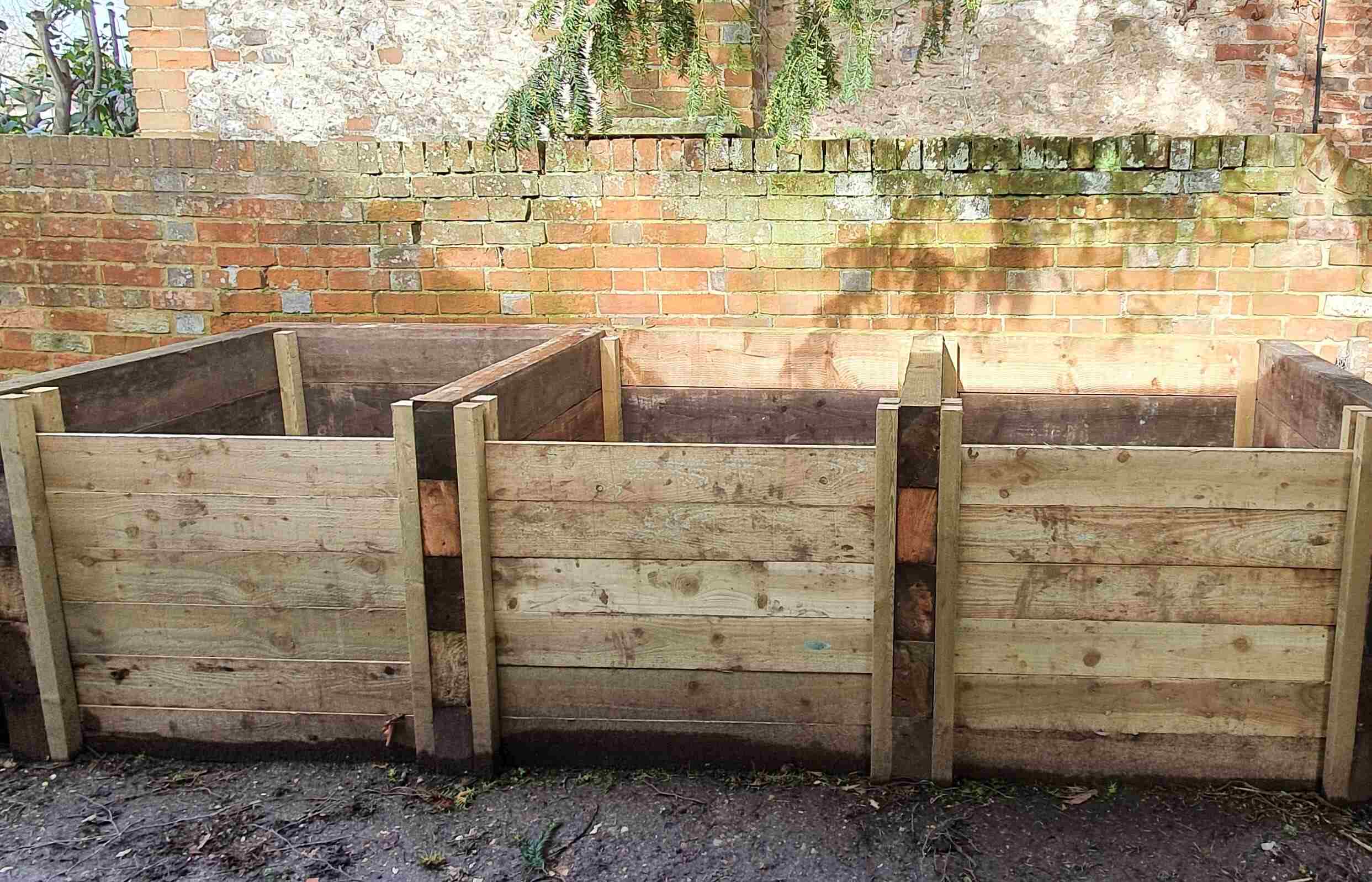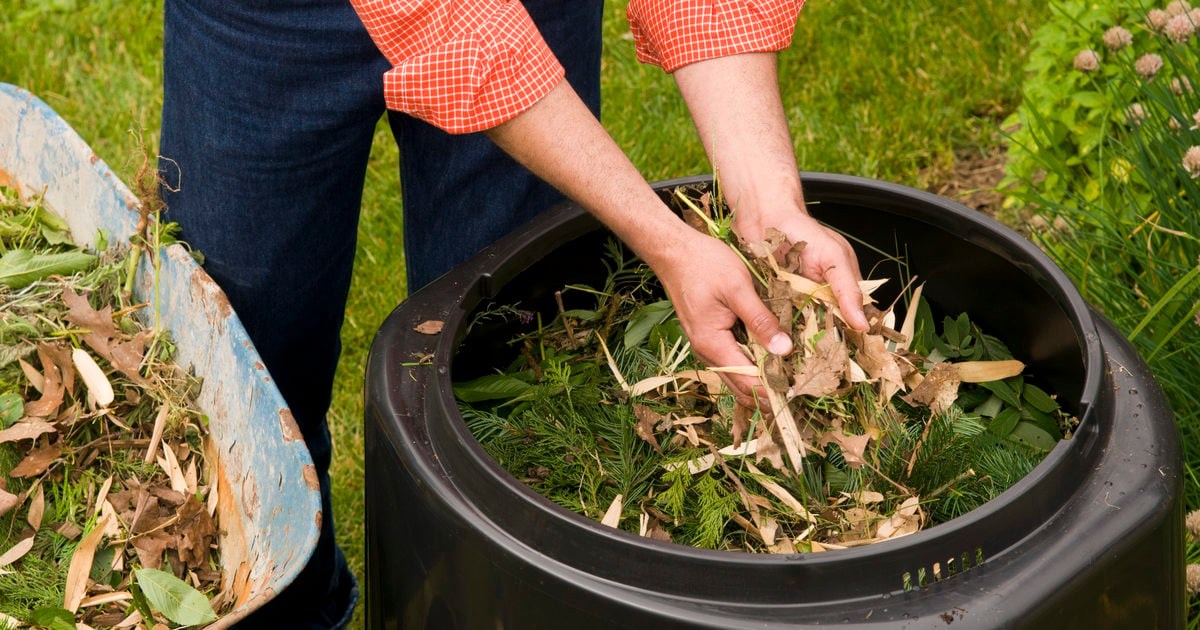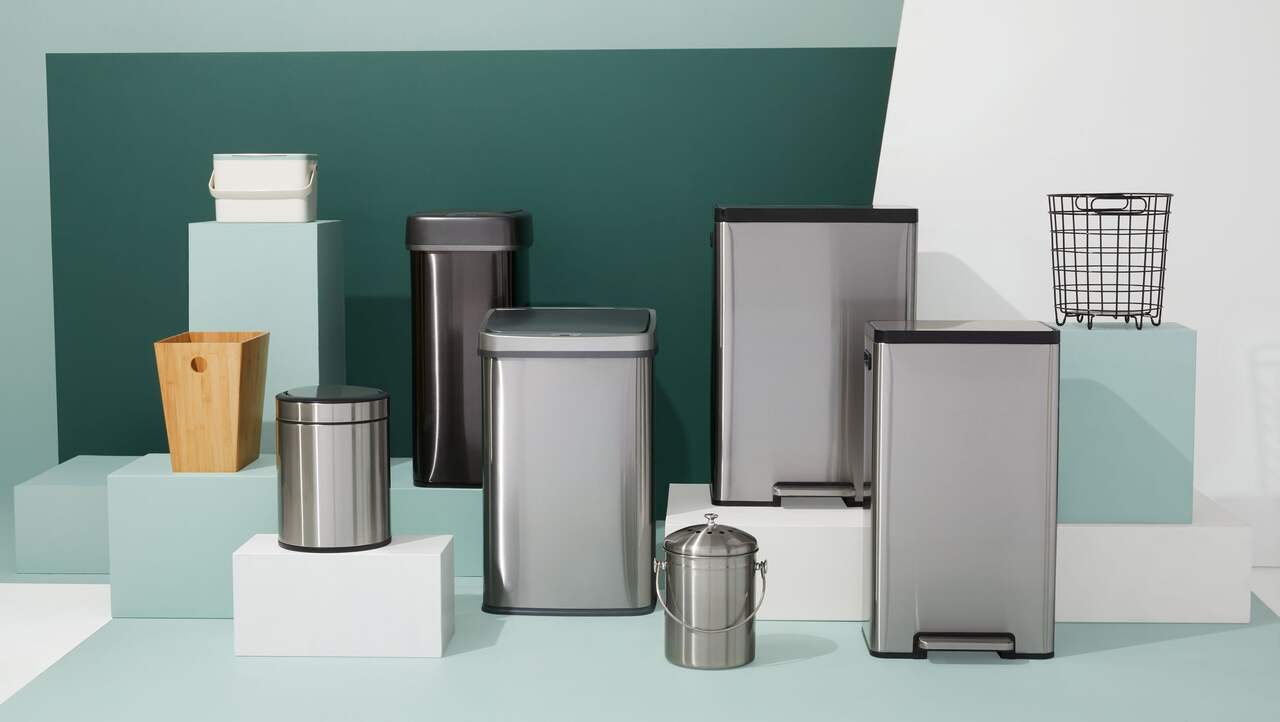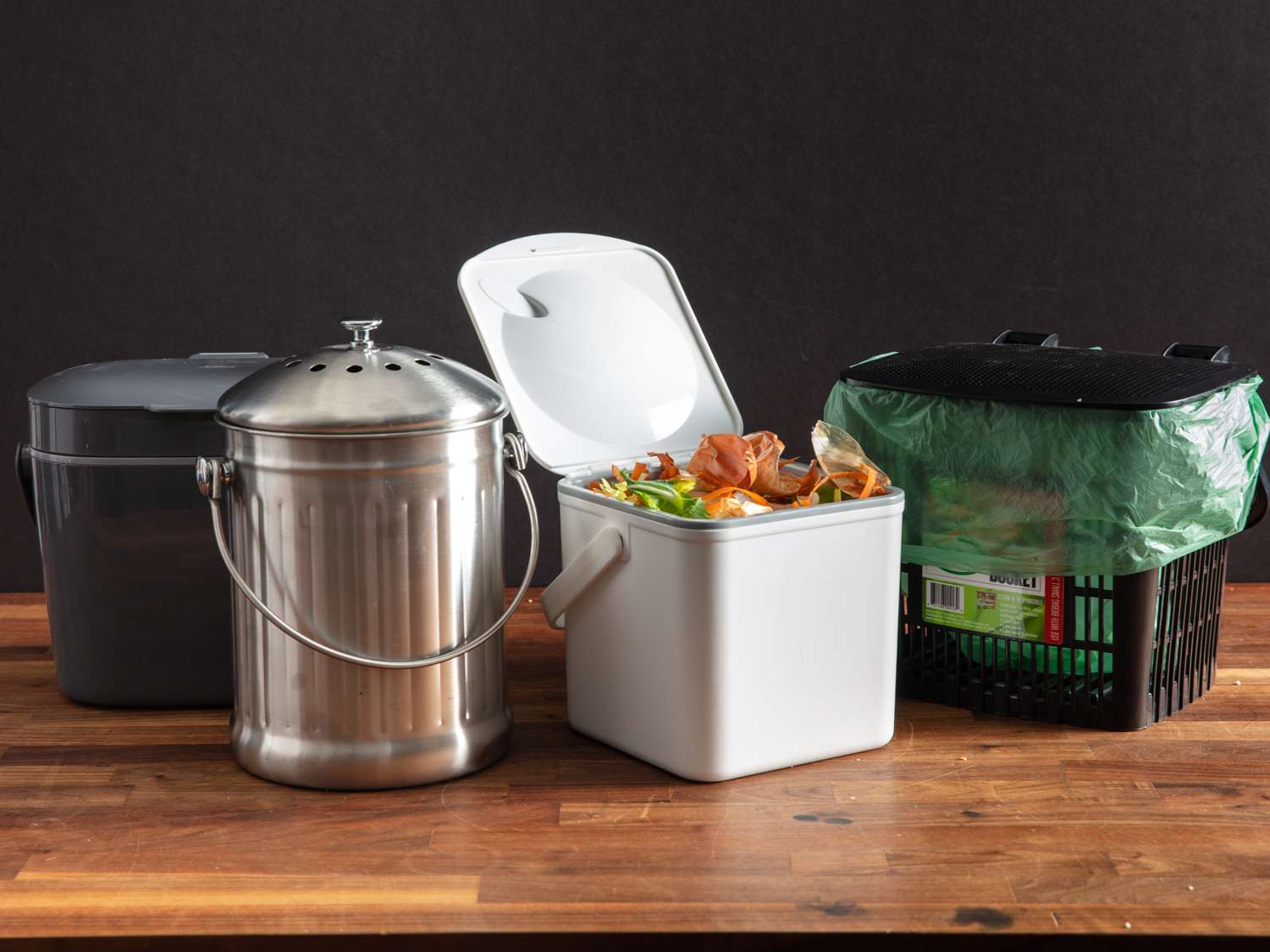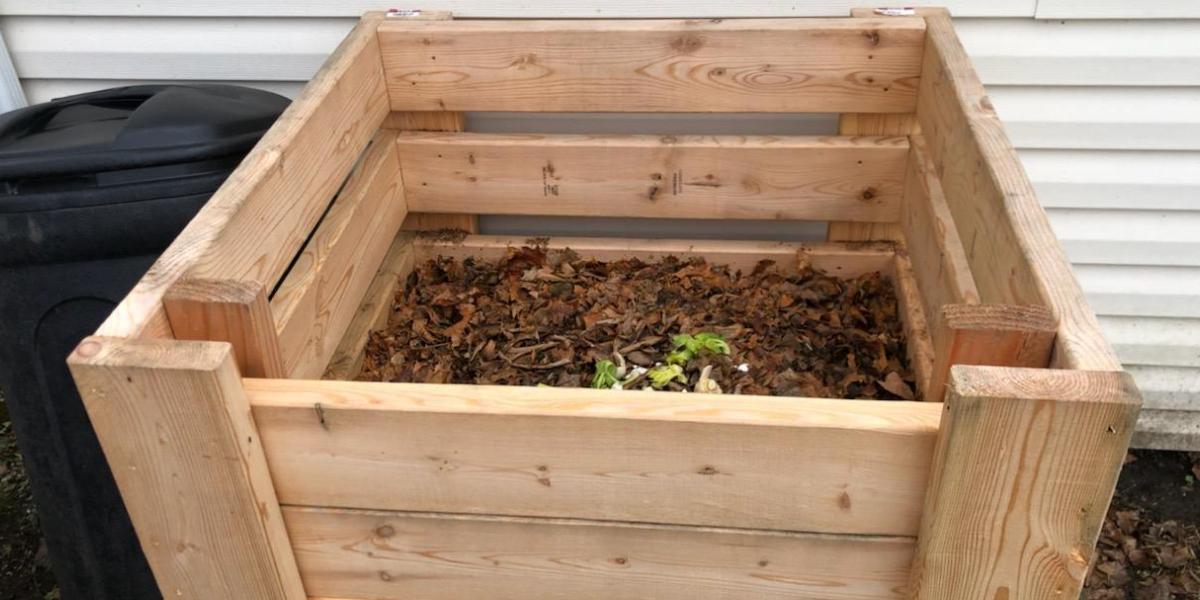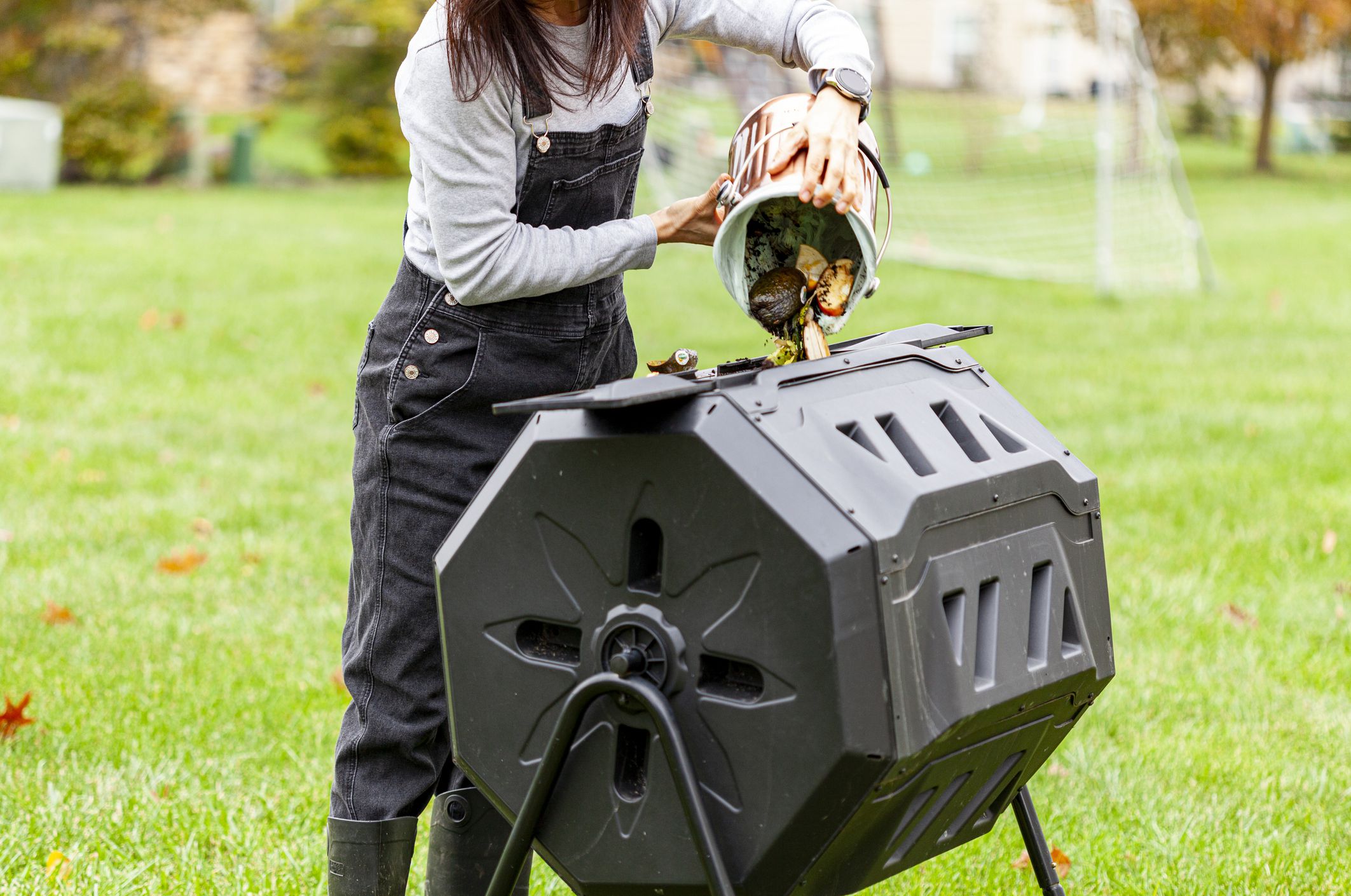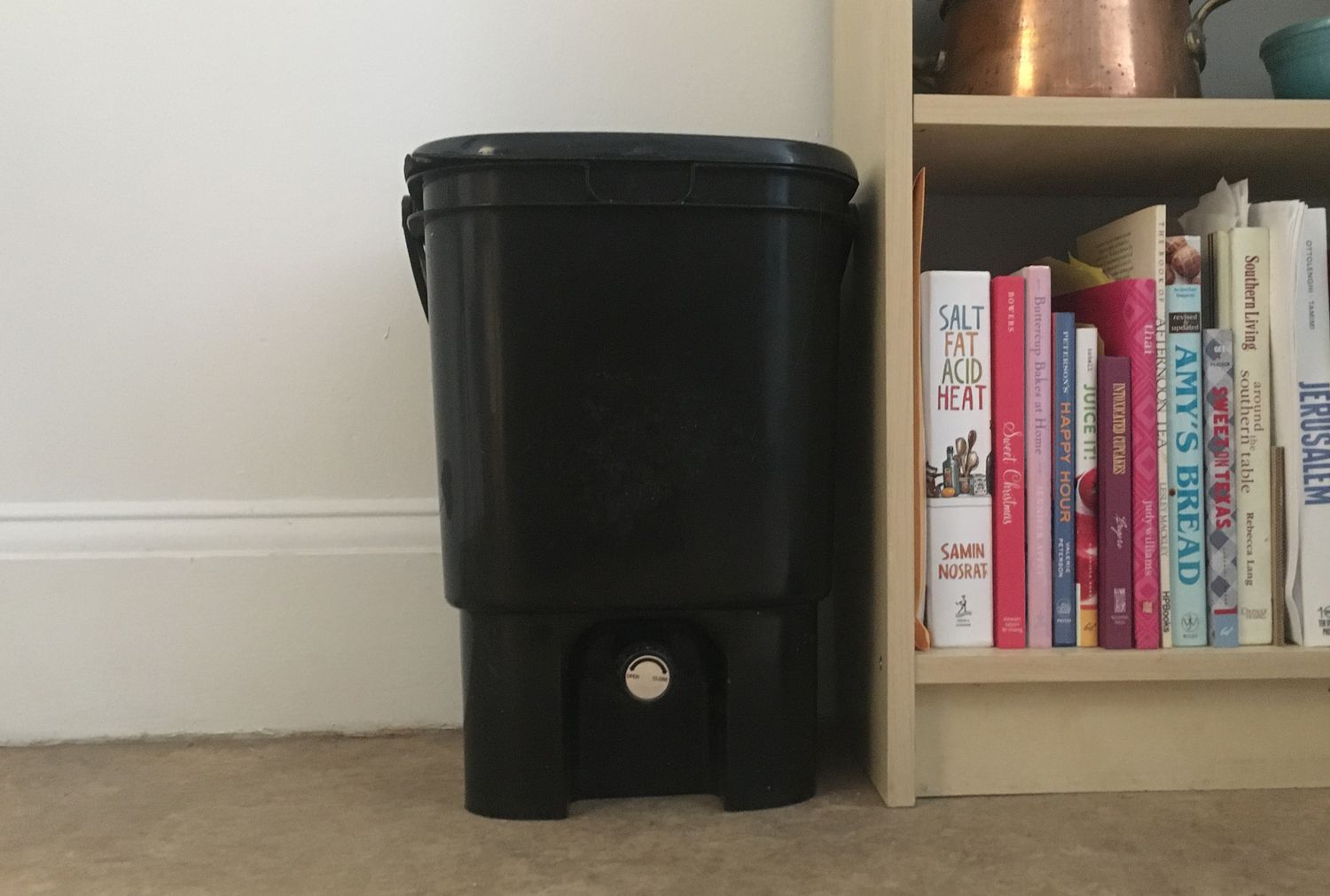Home>Gardening Basics>What Is A Compost Bin


Gardening Basics
What Is A Compost Bin
Modified: January 22, 2024
Learn the basics of getting started with a compost bin. Discover the benefits of composting and how to create nutrient-rich soil for your garden.
(Many of the links in this article redirect to a specific reviewed product. Your purchase of these products through affiliate links helps to generate commission for Chicagolandgardening.com, at no extra cost. Learn more)
Table of Contents
Introduction
Welcome to the world of composting! If you’re looking for a sustainable and eco-friendly way to reduce waste and improve your garden or plants, a compost bin may be just what you need. Composting is the process of converting organic waste materials into nutrient-rich compost that can be used as a natural fertilizer.
Compost bins are specifically designed containers that facilitate the decomposition of organic matter. By providing the right conditions, compost bins create an ideal environment for beneficial bacteria, fungi, worms, and other microorganisms to break down organic waste into nutrient-rich compost.
The concept of composting has been around for centuries, but its popularity has grown exponentially in recent years as people recognize the importance of sustainable living and reducing our impact on the environment. Composting not only helps divert waste from landfills but also improves soil health, reduces the need for chemical fertilizers, and minimizes greenhouse gas emissions.
In this article, we will explore the world of compost bins, exploring their benefits, how to choose the right one for your needs, setting up and maintaining a compost bin, what can be composted, troubleshooting common issues, and even how to harvest and use the compost in your garden.
Whether you’re a seasoned gardener or a beginner with a green thumb, turning your kitchen scraps and yard waste into black gold with a compost bin is a rewarding and sustainable practice. Let’s dive in and discover the wonderful world of composting!
What is a Compost Bin?
A compost bin is a specifically designed container used for the decomposition of organic materials into nutrient-rich compost. It provides an enclosed environment where organic waste materials such as food scraps, yard waste, and other biodegradable items break down through a natural process called composting.
Compost bins come in a variety of shapes, sizes, and materials. They can be as simple as a homemade bin made from recycled materials or as sophisticated as a commercial bin with multiple chambers for efficient composting. The choice of compost bin depends on the available space, amount of waste generated, and personal preferences.
Composting is a natural process that occurs when organic materials are broken down by microorganisms such as bacteria, fungi, and worms. These microorganisms thrive in an aerobic (oxygen-rich) environment, and a compost bin provides the perfect conditions to facilitate their growth and activity.
The compost bin acts as a controlled system that allows air circulation, moisture retention, and temperature regulation. This creates an optimal environment for the microorganisms to efficiently decompose the organic matter, resulting in the production of nutrient-rich compost.
Compost bins generally have features that aid in the composting process. They often include perforations or ventilation systems to promote airflow and prevent the compost from becoming too compact. Many bins also have a lid or a cover to retain moisture and prevent pests from accessing the compost.
Overall, a compost bin is a valuable tool for converting organic waste into a valuable resource. It harnesses the power of nature’s decomposition process and turns it into nutrient-rich compost that can be used to improve the soil health of gardens, lawns, and potted plants.
In the next sections, we will explore the numerous benefits of using a compost bin, discuss how to choose the right bin for your needs, and provide guidance on setting up and maintaining a successful composting system.
Benefits of Using a Compost Bin
Using a compost bin offers a multitude of benefits that extend beyond just reducing waste. Let’s take a look at some of the key advantages:
- Waste Reduction: Composting allows you to divert a significant amount of organic waste from ending up in landfills. Food scraps, yard trimmings, and other biodegradable materials can be transformed into nutrient-rich compost instead of contributing to methane emissions in landfills.
- Natural Fertilizer: Compost is often referred to as “black gold” for a good reason. It is a valuable natural fertilizer that is rich in essential nutrients and beneficial microorganisms that promote healthy plant growth. It helps improve soil structure, enhances moisture retention, and provides a steady release of nutrients over time.
- Improved Soil Health: Adding compost to your soil improves its overall health and fertility. It enriches the soil with organic matter, enhances its ability to retain moisture, and promotes a healthy balance of microorganisms. Healthy soil leads to healthier plants with increased resistance to diseases and pests.
- Reduced Need for Chemical Fertilizers: By using compost, you can significantly reduce or eliminate the need for synthetic fertilizers. Chemical fertilizers can leach into waterways, harm beneficial organisms, and contribute to environmental pollution. Compost provides a natural, sustainable alternative that nourishes plants without the negative impacts.
- Cost Savings: Making your own compost with a compost bin is a cost-effective solution. You can repurpose kitchen scraps and yard waste rather than purchasing commercial fertilizers or soil amendments. Additionally, compost helps plants grow stronger and more resistant to diseases, reducing the need for expensive pesticides and other treatments.
- Environmental Benefits: Composting reduces greenhouse gas emissions associated with organic waste decomposition in landfills. By diverting organic waste from landfills, you help mitigate climate change and contribute to a healthier environment. Composting also conserves water by improving soil moisture retention and reducing the need for irrigation.
These are just a few of the many benefits of using a compost bin. Whether you’re an avid gardener, a sustainability enthusiast, or simply looking for ways to reduce waste, composting is a practical and rewarding practice that allows you to contribute to a greener, healthier planet.
Choosing the Right Compost Bin
Choosing the right compost bin is an important step in establishing a successful composting system. There are various factors to consider when selecting a bin that suits your needs and space constraints. Here are some key considerations:
- Size: Consider the amount of organic waste you generate and the available space for the compost bin. If you have a small garden or limited outdoor space, a compact or vertical compost bin may be more suitable. Larger bins are ideal for those with more space and a higher volume of organic waste.
- Material: Compost bins are available in different materials, including plastic, wood, metal, and even recycled materials. Plastic bins are lightweight, durable, and low-maintenance. Wood bins are aesthetically pleasing but may require more upkeep. Metal bins offer durability but can retain heat, which may increase the composting process.
- Design: Consider the design features of the compost bin. Some bins have multiple chambers or compartments, allowing for different stages of composting. Others may have features such as tumbling mechanisms for easier turning and aeration. Choose a design that suits your preferences and composting goals.
- Aeration and Drainage: Look for bins that provide adequate aeration and drainage. Good airflow is crucial for the composting process, so make sure the bin has ventilation or perforations to allow oxygen to reach the compost. Proper drainage ensures excess moisture can escape, preventing a soggy compost pile.
- Pest Control: Consider whether the compost bin has features for pest control. Some bins come with lids or covers to keep pests out, while others have raised bottoms to discourage rodents from accessing the compost. If pest control is a concern in your area, choose a bin with suitable protective measures.
It’s also worth considering your level of involvement in the composting process. Some bins require more manual turning and mixing, while others are designed for low-maintenance composting. Choose a bin that aligns with your desired level of engagement.
If you’re unsure which compost bin to choose, consider consulting local nurseries, gardening centers, or online resources for recommendations. You can also reach out to fellow gardeners or composting enthusiasts for their insights and experiences.
Remember, the right compost bin will ultimately depend on your specific needs, available space, and composting goals. By selecting a bin that suits your requirements, you’ll be well on your way to creating a successful composting system.
Setting Up a Compost Bin
Setting up a compost bin is a straightforward process that requires a few essential steps. Here’s a guide to help you get started:
- Choose a Location: Select a suitable location for your compost bin. Ideally, it should be placed on level ground and in a spot that receives ample sunlight. Ensure that the location is easily accessible for adding materials, turning the compost, and harvesting the finished compost.
- Prepare the Base: Prepare the base for your compost bin by ensuring proper drainage and aeration. Place a layer of twigs or small branches at the bottom of the bin to facilitate airflow and drainage. This helps prevent the compost from becoming waterlogged and improves overall composting efficiency.
- Layer the Materials: Begin layering the composting materials in your bin. Start with a layer of carbon-rich “brown” materials, such as dried leaves, straw, or shredded newspaper. Follow this with a layer of nitrogen-rich “green” materials, such as kitchen scraps, grass clippings, or fresh plant trimmings. Alternate between brown and green layers to create a balanced compost pile.
- Manage Moisture: Maintaining the right moisture level is crucial for the success of your compost. The pile should be moist, resembling a damp sponge, but not excessively wet. If the compost becomes too dry, add water to moisten it. Conversely, if it becomes too wet, add dry materials like dry leaves or shredded newspaper to absorb the excess moisture.
- Aerate the Compost: Regularly turn and mix the compost to ensure proper aeration. This allows oxygen to reach the microorganisms and promotes faster decomposition. Use a garden fork or compost turner to gently mix the materials. Aim to turn the compost every 1-2 weeks to maintain good airflow and evenly distribute the decomposing materials.
- Monitor the Compost: Keep an eye on the compost pile to monitor its progress. The composting process typically takes several months to a year, depending on various factors such as temperature, moisture levels, and the materials used. Keep the compost moist, and if necessary, adjust its ingredients or aeration to facilitate decomposition.
Remember to avoid adding meat, dairy products, oily items, or any materials that may attract pests or slow down the composting process. It’s also a good idea to avoid adding weed seeds or diseased plant material that may survive the composting process.
By following these steps and maintaining regular care and attention, you’ll be on your way to successfully setting up and managing your compost bin. Before you know it, you’ll be rewarded with nutrient-rich compost to enhance the health and vitality of your plants.
What to Compost
Composting offers a fantastic opportunity to divert organic waste from landfill and transform it into nutrient-rich compost. Knowing what can and cannot be composted is essential for maintaining a healthy compost pile. Here are some guidelines on what you can compost:
- Fruit and Vegetable Scraps: Fruit and vegetable scraps, such as peelings, cores, and trimmings, are excellent additions to the compost pile. These provide valuable nutrients and moisture to the composting process.
- Coffee Grounds and Tea Bags: Coffee grounds and used tea bags are rich in nitrogen and break down quickly in the compost. Ensure that the tea bags are made of natural fibers that will decompose.
- Eggshells: Crushed eggshells are a great source of calcium and add valuable minerals to compost. Ensure that the eggshells are rinsed and allowed to dry before adding them to the pile.
- Yard Waste: Leaves, grass clippings, small branches, and plant trimmings can all be composted. Shred or chop larger items to speed up decomposition and promote even decomposition.
- Straw and Hay: Straw and hay can be added to the compost pile as a source of carbon. These materials help to balance the nitrogen-rich components and promote a healthy composting process.
- Paper and Cardboard: Paper materials like newspaper, cardboard, and shredded paper can all be composted. Avoid using glossy or heavily colored paper and remove any plastic or tape before adding them to the pile.
- Plant Trimmings: Dead plants, weeds without seeds, and spent flowers can be composted. Avoid adding weeds with seeds or plants that are diseased to prevent the spread of weed seeds or pathogens.
- Wood Ash: Wood ash can be added to the compost pile in small amounts. It is rich in potassium and helps to balance the pH of the compost.
- Manure: Manure from herbivores, such as cows, horses, or chickens, can be used in compost. However, ensure that the manure has aged for several months to reduce the risk of pathogens.
While the list of compostable items is extensive, it’s important to know what not to compost to avoid potential issues. Do not compost meat and dairy products, oily items, pet waste, diseased plants, and weeds with seeds. These materials can attract pests, introduce harmful pathogens, or slow down the composting process.
Remember to maintain a balance between nitrogen-rich “green” materials and carbon-rich “brown” materials in your compost pile. This ensures optimal decomposition and helps create nutrient-rich compost for your garden.
By composting a wide range of organic materials, you’ll not only reduce waste but also create a valuable resource to enrich your soil and support the growth and vitality of your plants.
Maintaining a Compost Bin
Maintaining a compost bin is key to ensuring a successful composting process and achieving nutrient-rich compost. Here are some essential tips to help you maintain your compost bin:
- Monitor Moisture Levels: It’s important to keep the compost pile moist, resembling a damp sponge. If the pile becomes too dry, add water during turning or use a hose to moisten it. If the pile becomes too wet and starts to smell, add dry materials like straw or shredded newspaper to absorb excess moisture.
- Turn and Mix the Compost: Regularly turn and mix the compost pile to ensure proper aeration and even decomposition. Use a garden fork or compost turner to gently mix the materials. Aim to turn the compost every 1-2 weeks to maintain good airflow and promote decomposition.
- Add Brown and Green Materials: Continuously add a mix of nitrogen-rich “green” materials and carbon-rich “brown” materials to maintain a balanced compost pile. Green materials include kitchen scraps, grass clippings, and plant trimmings, while brown materials include dried leaves, shredded paper, and straw.
- Maintain a Sizeable Compost Pile: A compost pile needs to reach a critical mass to generate enough heat for efficient decomposition. Ensure that your compost pile is at least 3 feet high and wide. Smaller piles may not heat up enough, while excessively large piles may become too compact and hinder airflow.
- Keep Pest Control in Mind: To prevent pests such as rodents or flies, avoid adding meat, dairy, or oily items to the compost. Additionally, consider using a compost bin with a secure lid or cover to deter animals from accessing the compost.
- Be Patient: Composting is a gradual process that requires time and patience. It can take several months to a year for the materials to break down into compost fully. Regularly monitor the compost and be patient as nature works its magic.
- Keep a Compost Schedule: Establish a composting schedule that works for you. Collect kitchen scraps in a countertop container or a small bin and add them to the compost pile regularly. This not only helps maintain a routine but also prevents odors and fruit flies in your kitchen.
Remember to avoid adding weeds with seeds, diseased plants, or invasive plant species to your compost pile. These can introduce weeds or pathogens to your garden when you use the compost.
Regular maintenance and attention to your compost bin will help create quality compost that enriches your soil and supports the growth of healthy plants. By following these guidelines, you’ll be on your way to achieving a successful composting system.
Troubleshooting Common Issues
Composting is a natural process, but it can sometimes encounter challenges. Here are some common issues you may face with your compost bin and how to troubleshoot them:
- Odor: If your compost pile starts to emit a unpleasant odor, it may indicate that the pile is too wet or lacks proper aeration. To address this, turn the compost pile to increase airflow and mix in dry materials like straw or shredded newspaper to absorb excess moisture.
- Slow Decomposition: If your compost is taking longer to decompose, it may be due to a lack of nitrogen or insufficient turning and mixing. Ensure that you have a good balance of green and brown materials in your pile. Additionally, make sure to regularly turn and mix the compost to provide oxygen and encourage decomposition.
- Pest Infestation: If pests like flies or rodents are attracted to your compost bin, it may be because you’re adding meat, dairy, or oily items. Avoid these materials to deter pests. Additionally, consider using a compost bin with a secure lid or covering to prevent pests from accessing the compost.
- Excessive Moisture: If your compost pile becomes overly wet and waterlogged, it can hinder decomposition. Add dry materials like shredded paper or leaves to absorb excess moisture. Ensure that your compost bin has proper drainage to prevent water from accumulating.
- Unpleasant Smell: A strong, unpleasant smell in your compost can indicate an imbalance of green and brown materials or lack of aeration. Adjust the ratio of green to brown materials, and make sure to turn and mix the compost pile regularly to encourage airflow and reduce odor.
- Rodent Intrusion: If rodents are accessing your compost bin, ensure that you’re not adding food scraps that may attract them. Avoid adding meat, dairy, or greasy items. Consider securing your compost bin with a well-fitted lid or covering, and ensure that there are no gaps or openings that could allow rodents to enter.
It’s important to remember that troubleshooting composting issues requires some experimentation and adjustments to find what works best for your specific situation. Composting is a dynamic process influenced by various factors, such as temperature, moisture, and the materials used.
When facing challenges, observe your compost bin, make necessary adjustments, and practice patience. Over time, you will develop a deep understanding of your composting system and find solutions that work for you.
By troubleshooting and addressing these common issues, you’ll be able to maintain a healthy compost pile and continue the journey towards creating nutrient-rich compost for your garden.
Harvesting and Using Compost
After months of composting, it’s time to reap the rewards of your efforts by harvesting and utilizing the nutrient-rich compost. Here are some steps to help you effectively harvest and make the most of your compost:
- Check for Maturity: Before harvesting your compost, ensure that it has reached a dark, crumbly, and earthy texture. The materials should be well decomposed and no longer recognizable. This is a sign that the compost is mature and ready for use.
- Separate Unfinished Compost: During the harvesting process, you may come across some unfinished or partially decomposed materials. Separate these from the mature compost and return them to the compost bin for further decomposition.
- Collect the Finished Compost: Collect the mature compost from the bottom or center of the compost pile. Use a garden fork or shovel to transfer the compost to a container or wheelbarrow for easy transportation.
- Apply Compost to Gardens: Use the harvested compost to improve soil fertility and structure in your garden beds, vegetable patches, or flower beds. Spread a layer of compost evenly over the soil surface and gently work it into the top few inches of soil. This will enrich the soil with nutrients and enhance its overall health.
- Use Compost as Mulch: Compost can also be used as mulch to suppress weeds, retain moisture, and regulate soil temperatures. Apply a layer of compost around the base of plants, leaving a small space around the stem to prevent rotting.
- Make Compost Tea: Compost tea is a nutrient-rich liquid created by steeping compost in water. It can be used as a natural, organic fertilizer for plants. Simply place a handful of compost in a cloth bag or old stocking, soak it in water for several days, and use the resulting tea to water your plants.
- Store Excess Compost: If you have more compost than you can immediately use, store it in a dry, covered area to preserve its quality. Make sure the compost is not exposed to excessive moisture, which can cause it to decompose further.
By effectively harvesting and utilizing your compost, you’ll reap the benefits of healthier soil, improved plant growth, and reduced reliance on synthetic fertilizers.
Remember to continue maintaining your compost bin after harvesting to ensure a steady supply of nutrient-rich compost in the future. Collect new organic materials, layer them in the compost bin, and follow the composting process to create a continuous cycle of sustainable gardening practices.
With dedication and proper utilization, your composting efforts will help create a more vibrant and thriving garden ecosystem.
Conclusion
Composting is a simple yet powerful way to reduce waste, improve soil health, and contribute to a sustainable environment. By using a compost bin, you can effectively convert organic waste into nutrient-rich compost that nourishes your garden and plants.
In this article, we explored the world of compost bins, from understanding what they are and their benefits to choosing the right one for your needs. We discussed the steps involved in setting up and maintaining a compost bin, as well as what materials can be composted and how to troubleshoot common issues. Additionally, we learned about the process of harvesting and utilizing the finished compost in your garden.
Composting is not only environmentally friendly but also rewarding. By diverting organic waste from landfills, you contribute to reducing greenhouse gas emissions and promoting a healthier planet. Compost enriches the soil, improves its structure, enhances plant growth, and reduces the need for chemical fertilizers.
Remember to be patient and adaptable as you embark on your composting journey. Composting is a natural process influenced by various factors, and it may take time to fine-tune your composting system to suit your specific conditions. With regular care, attention, and adjustment, you’ll be rewarded with nutrient-rich compost that enhances the health, beauty, and productivity of your garden.
So, why not take the next step and start composting? Whether you have acres of land or a small balcony, there’s a composting solution that can work for you. Join the millions of people around the world who are embracing this sustainable practice and making a positive impact on our environment.

